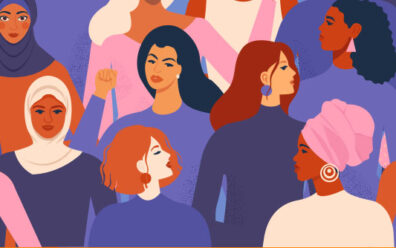Customer Experience5 minute read
What’s the Difference Between Customer Service and Customer Experience?
When it comes to customer service versus customer experience, you already know both are important – but how do you differentiate?

Customer experience is the entire journey a customer takes with your brand, from awareness to purchase and beyond. Customer service is a single event within the customer journey, wherein a customer reaches out for assistance from your team. Both are critical to the success of your business, and we’ll explore both customer service and customer experience more in-depth.
Customer experience is the entire journey a customer takes with your brand. Customer service is a single event within the customer journey. Click To Tweet
What is Customer Service?

Shutterstock; Photo by Vadym Pastukh
Customer service is the support provided to customers before and after they purchase (or sign up for a service) to ensure an enjoyable experience with your company. Characteristics of good customer service include:
- Quick response times
- Collecting and analyzing customer feedback
- Self-service resources
- Omni-channel support
- A refined set of soft skills (active listening, positive vocabulary, creative problem solving)
90% of Americans consider the quality of customer service when deciding whether or not to make a purchase, and 89% of customers are more likely to buy again after a positive interaction. So, the stakes for getting this piece of the customer experience puzzle correct are higher than ever. After all, it takes 12 positive customer service interactions to make up for the impact of just one negative one. If these interactions aren’t navigated well, it increases the likelihood your customer will buy from a competitor next time.
What is Customer Experience?

Shutterstock; Photo by Rawpixel.com
Customer experience (or CX) is the culmination of everything your company does that impacts a customer’s perception of your organization.
Customer experience includes “the messaging you use, the products you sell, the sales process, and what happens after the sale, plus other internal factors like the interworking of the company, its leadership, and the engineering of the product or service.”
The three main areas of customer experience include:
- Technology

Shutterstock; Photo by Roman Samborskyi
This consists of the product or service itself. Everything from how your product or service works to its unique selling proposition (what makes it better than your competitors) falls under this umbrella and is a critical aspect of the customer experience.
- Design

Shutterstock; Photo by REDPIXEL.PL
Design refers to the touchpoint between brand and customer, including product design and marketing and how the customer feels interacting with your brand. This may include marketing and advertisements customers see about your product to using your company app to their retail shopping experience (and more).
- Customer Service

Shutterstock; Photo by fizkes
This entails any points where customers interact with your team. Both customer support and success fall under the umbrella of customer service. It may seem obvious, but truly listening to customers is critical in creating an excellent experience. One McKinsey study revealed that it’s the interactions that have the highest emotional charge. These interactions provide the most significant opportunities to bond with customers and deliver excellent service which results in a great experience.
There are a few standout companies that do customer experience well. Take Starbucks, for instance. In addition to making it easy to order coffee before even arriving via their mobile app, Starbucks uses gamification to make earning rewards fun. In addition to a well-laid-out app design, Starbucks allows customers to accumulate stars more quickly by buying on Double Star Day and easily keeping track of points earned. This encourages return visits, incentivizes purchases, and more.
A high-quality customer experience helps promote loyalty, increase retention, and create evangelists for your brand. And that’s perhaps the most powerful endorsement of all, especially given that customers who have a positive experience spend up to 140% more than those who have a negative experience.
An Excellent Customer Experience is No Longer Optional
In an age where one lousy customer interaction with your business can tarnish an opinion of your brand forever, prioritizing your customer experience is no longer optional. Customers have many options to choose from 一 and the resources to educate themselves about your organization and your competitors. Hence, businesses that optimize every touchpoint of the customer experience (especially customer service) stand to gain the most. Ensuring that every stage of the customer journey delights the customer will differentiate between rising above your competitors 一 or being left in their wake.
We're celebrating 25 years of providing our clients excellent experiences for their customers. Find out how we can help you, too.
Contact UsMarketing Director


This Might Interest You...
This website uses cookies to personalize and improve your experience. Continue browsing our site if you agree to our Cookie Policy or feel free to Manage Cookies yourself.


